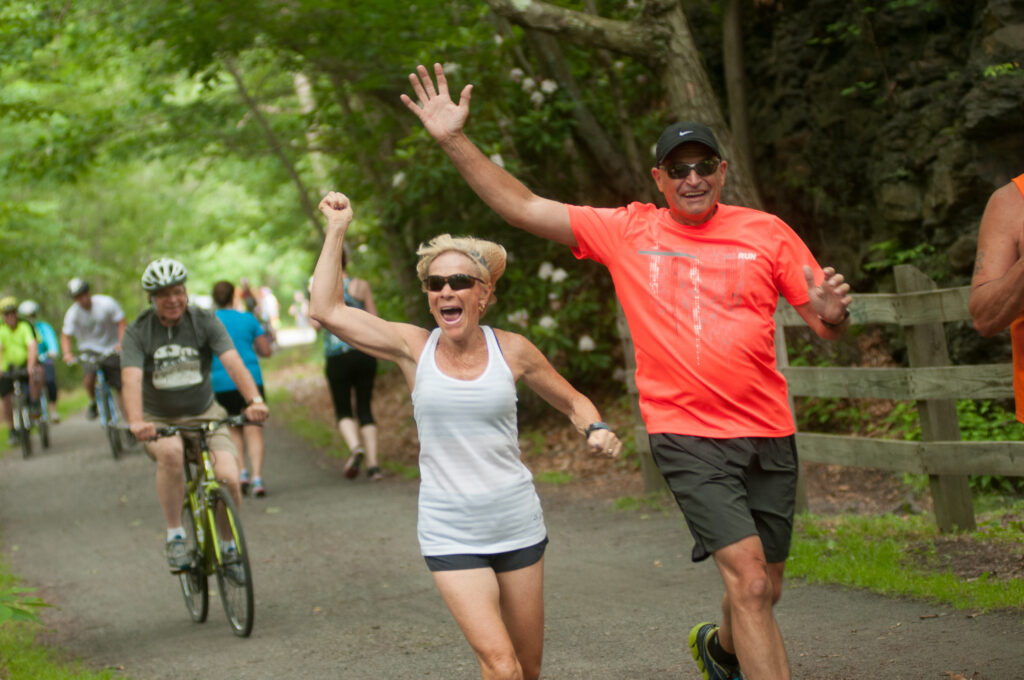SCRANTON –– Visitors are spending more money on the Lackawanna River Heritage Trail, propelling Pennsylvania’s surging outdoor economy to even greater heights.

In 2022/23, the LRHT generated a statewide economic impact of $144.2 million, including $106.9 million in Lackawanna County, according to an analysis prepared for the Lackawanna Heritage Valley Authority by Urban Partners of Philadelphia. The report measured direct and indirect economic benefits and noted that spending by trail users increased 26 percent, adjusted for inflation, since the beginning of 2017.
- The direct economic impact of the trail was $95.3 million for Pennsylvania and $78.1 million for Lackawanna County.
- The indirect economic impact was $48.8 million and $28.8 million, respectively.
Those combined impacts created an estimated equivalent of 886 full-time jobs in the state, including 721 jobs in the county, generating $38.4 million in state wages and $26.2 million in county wages. The LRHT produced an estimated $4.5 million in state tax revenues and $666,000 in county tax revenues, according to the report.
“The economic vitality of the Lackawanna River Heritage Trail is a reflection of myriad additions and improvements made as we continue to increase accessibility and close gaps within the trail system,” said Joseph J. Corcoran, LHVA executive director. He cited recent developments at the Marvine Trail in Green Ridge/North End and Dickson City Trail, the Lackawanna Avenue Connector in Scranton and trail extensions at the Carbondale Riverwalk and D&H Rail Trail in Simpson. Combined with the D&H Rail-Trail, the LRHT spans nearly 70 miles in four counties of northeastern Pennsylvania.
The analysis found that only 5.5 percent of 600 people who responded to a user survey did not purchase any sundries on their trail trips — a significant decline from 53.3 percent in 2016 — indicating much more spending over the seven-years. Popular items were water/beverages, meals, sandwiches, and snacks. All told, the average trail user spent $23.73, adjusted for inflation, which was $14.12 higher than in 2016.
While 25.1 percent of respondents did not purchase non-consumable goods related to trail usage – compared to 29.1 percent in 2016 – trail users who did buy something spent mostly on footwear, clothing, bicycles, and bike supplies. Spending averaged $536.17, adjusted for inflation, up significantly from $337.72 in 2016.
There were approximately 231,000 visits to the LRHT in 2022/23, a decline of 27 percent which researchers partially attributed to the addition of new electric trail counters that did not exist in 2016, as well as other factors.
“We have witnessed COVID changing household habits and routines due to different work, school, and travel patterns. It is possible that trail usage reflects those changes,” said Chris Lankenau, principal of Urban Partners.
Not surprisingly, most trail users live in Lackawanna County. Usage still favors women (50.7 percent) to men (46.5 percent). More than 44 percent used the trail for 1-2 hours, a slight drop from 2016, but those who used the trail for more than 2 hours increased from nine percent to 13 percent. “More than two hours would be an especially long walk or run,” said Lankenau. “The survey does indicate that bike usage increased since 2016, so that may be a factor.”
The Department of Conservation and Natural Resources values Pennsylvania’s outdoor economy at more than $13.6 billion, accounting for 152,000 jobs and 1.6 percent of the state’s Gross Domestic Product.
“We are thrilled that people, even in cost-conscious times, are prioritizing the value of creating unique user experiences on the Lackawanna River Heritage Trail,” said Owen Worozbyt, LHVA director of operations. He noted the LRHT will soon unveil a trail-friendly business plan with cost-effective strategies to help owners of small businesses attract more trail users passing close to their doors.
“Our investments are reaping tangible and intangible benefits for trail users and businesses who contribute to the growing outdoor economy in this vibrant northeastern corner of Pennsylvania,” he said.